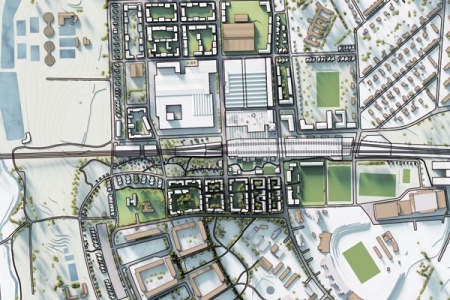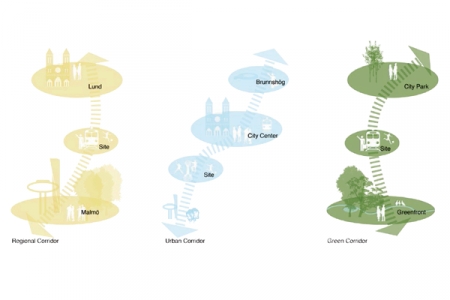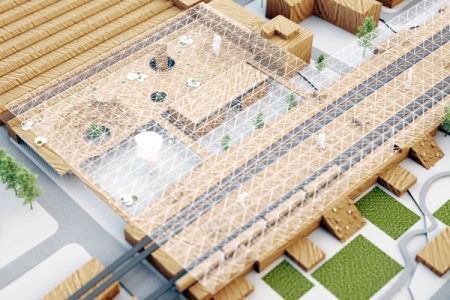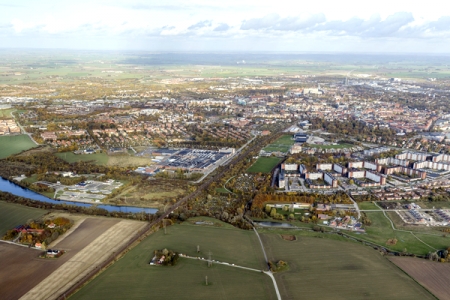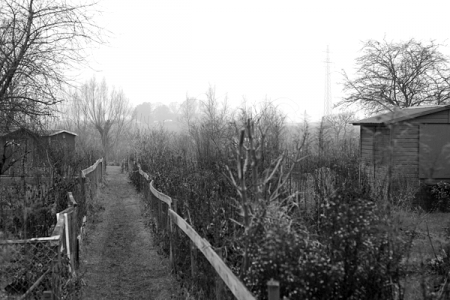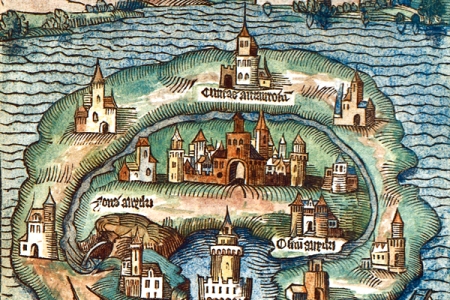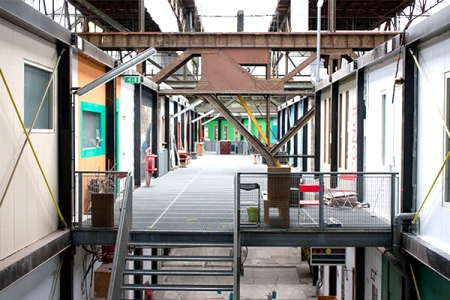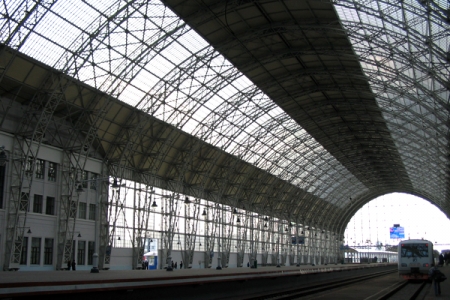Culture Symbiotic
Lund (SE) – Lauréat
DONNÉES DE L’ÉQUIPE
Représentante d’équipe : Joanna Hagstedt (SE) – urbaniste ; Associé : David Kiss (SE) – architecte urbaniste
Collaborateurs : Erik Jansson (SE), Simon Wallqvist (SE) – architectes
Göteborg – Sverige
joannahagstedt@hotmail.com – culturesymbiotic.tumblr.com
Voir la liste complète des portraits ici
Voir la page du site ici

D. Kiss, E. Jansson, S. Wallqvist & J. Hagstedt
INTERVIEW
Cliquer sur les images pour les agrandir
1. How did you form the team for the competition?
Joanna and Simon, co-workers at the time, initially formed the team. Erik was invited shortly thereafter and lastly David came on board. This is the very first project we have done together. The team members come from varying academic backgrounds and complement each other, pushing the questions further.
2. How do you define the main issue of your project, and how did you answer on this session main topic: Adaptability through Self-Organization, Sharing and/or Project (Process)?
We raised the question whether the “adaptable city” is a utopia of our time. Is it a sign of a society where the rich are getting richer and the poor poorer? We hope that our proposal can be part of a larger discussion relating to these questions. We chose to highlight urban development through cultural enlightenment rather than work with traditional process driven urban development.
We see that Lund has a great circulation of people and professionals. Lund University educates thousands of students; at the same time the city itself has a hard time keeping these young creative minds within the municipal borders after graduation.
Adapting the industrial buildings, intensifying life close to the new railway station and fostering the cultural activities and communities in the area will help create a passion-driven creative hub. We hope it has great potential to become the “place-to-be” when progressing through ones career or life.
3. How did this issue and the questions raised by the site mutation meet?
The existing cultural and passion-driven functions on site are thought of as a resource to be used in the process of the new development. The addition of a new railway station and new urban development together with the existing sports clubs, allotment gardens, nature and recreational character of the site is considered to be the backbone of the project.
4. Have you treated this issue previously? What were the reference projects that inspired yours?
Joanna and Simon have been involved in complex infrastructure projects, David has experience with urban interventions and Erik with architectural design and visualisation. We carried with us many ideas, thoughts and references to merge within the offered program. We had our eyes on theoretical discussions on infrastructure, culture, feminism as well as on several reference projects around the world.
The most important theory was Per Luigi Secco’s Culture 3.0 concept and an old classic, Thomas More’s Utopia.
The way we re-purpose the industrial buildings took inspiration from NSDM in Amsterdam. Old industrial buildings, such as AmDock, house new initiatives and businesses driven by young creative people. The surrounding area has become a centre for underground culture and events.
The giant roof construction, which bridges and encapsulates our creative hub, felt like a natural progression of the traditional railway station vocabulary, and serves as a nod to the many beautiful station-roofs around the world.
5. Today –at the era of economic crisis and sustainability– the urban-architectural project should reconsider its production method in time; how did you integrate this issue in your project?
As mentioned before we have chosen to focus on the issue of culture rather than the development time process. We believe culture and knowledge can get humans beyond the dominating paradigm of economic crisis and sustainability.
6. Is it the first time you have been awarded a prize at Europan? How could this help you in your professional career?
This is the first time we have been awarded a prize at Europan. For some of us it was the last chance to compete. We hope that our winning proposal and future work will allow us continuing raising discussions on urban development and design. Furthermore we hope that our expertise within the field of urban development will be requested rather sooner than later, both in Sweden as well as abroad.
